Artisanal Chinese tea gives matcha a run for its money
New tea houses opening in Singapore cater to a growing demand for experiential pursuits and a slower pace of life
[SINGAPORE] Matcha may be the dominant tea trend now as TikTok-driven global shortages fuel the demand for Japan’s umami-rich brew, but artisanal Chinese tea is getting its moment too.
In Singapore, new speciality tea houses have sprouted, with at least three openings in as many months. They add to the small but expanding market currently served by established names like Tea Chapter and Silk Tea Bar in Chinatown, and experimental players such as Danger Close Beverage Company in Bukit Merah and Antea Social in Jalan Besar.
This slow tea movement reflects a growing thirst for experiential pursuits, in line with changing values and resistance to a fast-paced, materialistic way of life.
Premium tea market on the rise
Dr Sonja Prokopec, professor of marketing at Essec Business School, Asia-Pacific, explains it as such: “The rise of premium, experience-driven tea culture aligns with the global shift towards experiential luxury, where consumers prioritise immersive, sensory experiences over material possessions.”
According to Bain & Company, the experiential luxury market is expanding at a 5 per cent compound annual growth rate, reflecting increasing demand for exclusive, high-quality experiences in sectors such as fine dining, travel and wellness.
“In Singapore and worldwide, tea is evolving beyond just a drink to become an immersive experience linked to ritual, craftsmanship and storytelling,” says Dr Prokopec. “While the growing Chinese presence in Singapore plays a key role, the trend is also driven by a broader shift towards wellness, luxury experiences and cultural appreciation.”
Younger, affluent consumers are seeking premium, immersive experiences, much like they did with third-wave coffee and artisanal cocktails. Given tea’s deep roots in Singapore’s traditions, the culture is being elevated through tea ceremonies, curated tastings and high-quality brews, which align with the wellness trend due to their calming and detoxifying properties, she adds.
Likewise, Dr Seshan Ramaswami, associate professor of marketing education at Singapore Management University, notes: “Interestingly, many of them (tea houses) have located themselves not in big malls but in ‘off-centre-city’ locations. This setting allows them to further cement their positioning as traditional tea houses with quality offerings in an ‘authentic’ setting.”
He highlights the rise of two distinct consumer segments: the super-rich consumers who “are constantly looking for unique, customised, premium experiences”, and the budget-conscious, who seek quality at affordable prices. He explains that the shrinking middle class will increasingly split between these two extremes, with occasional splurges on luxury.
Separately, he also notes the growing desire among younger consumers and upper-class segments in Asia to reconnect with traditions and one’s roots.
“The rise of premium Chinese tea shops seems to be the culmination of these trends,” he says. Some new outlets are offering highly premium and curated experiences that “are unlikely to become staple or habitual experiences, even for the luxury consumer”.
At the lower end, however, some of these tea spaces have a real chance to squeeze some market share from Singapore’s expensive coffee chains, he adds.
Blending experiential tea and tradition
Since its January opening, the tea cafe Lantine in Farrer Park has attracted a steady stream of visitors, fuelled by viral buzz on Xiaohongshu and Instagram.
Customers are drawn to the cafe’s Song Dynasty-inspired interior – rattan chairs, pecan and cherry wood furniture, Chinese windowsills, and lantern lamps, accompanied by a soft Mandopop soundtrack. Here, guests sip on roasted milk tea in flavours such as rock tea, goji berry and red date, and osmanthus (S$13.90), brewed in a clay pot over an open flame, a Yunnan-inspired technique that enhances the smoky aroma.
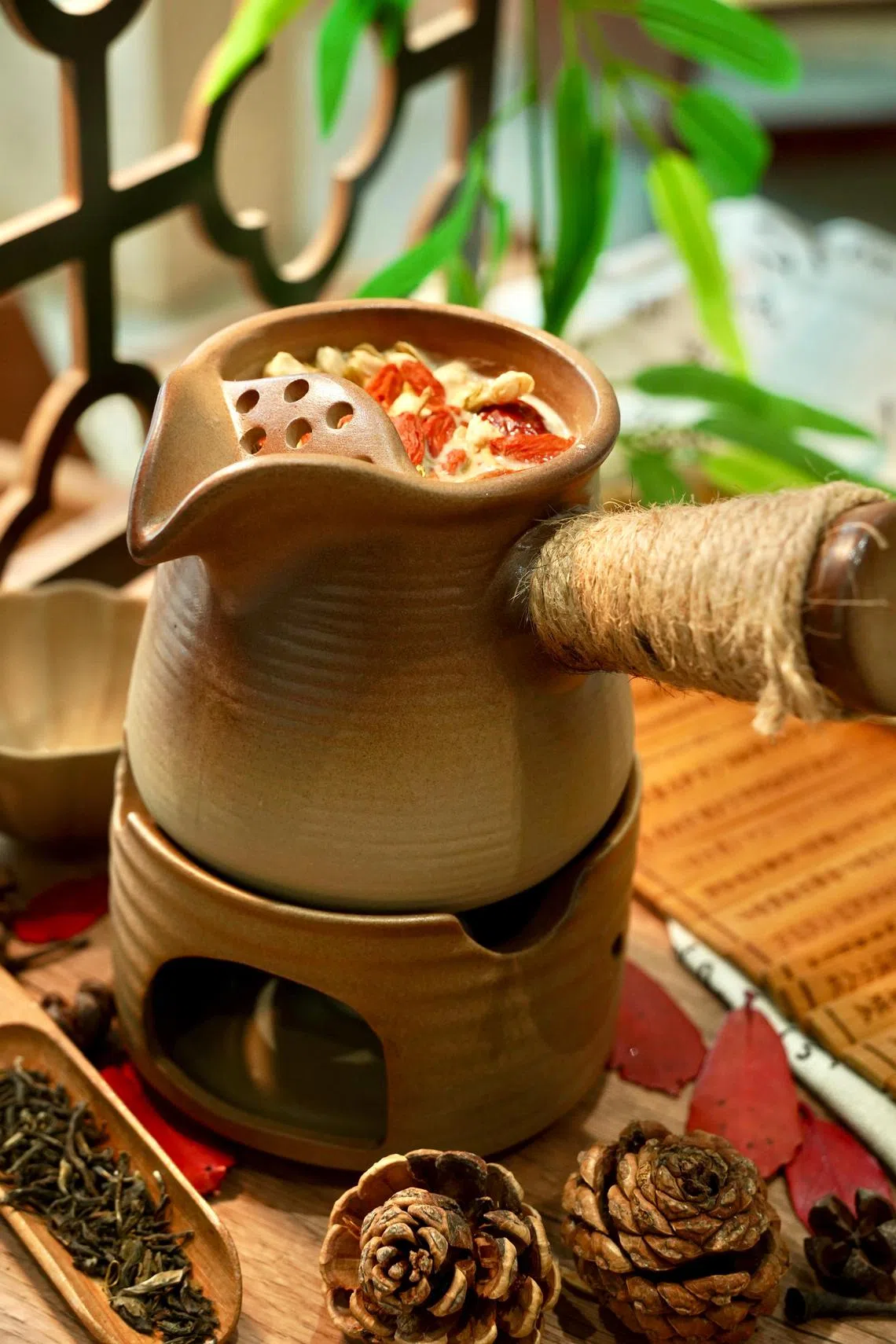
Malaysia-born founder Ng Tze Wei, 34, a former Haidilao staff, developed a deep appreciation for Chinese tea culture during his five years at the hotpot chain. A trip to Guangzhou last year introduced him to the city’s thriving cafe scene in the old town, where he learnt tea-brewing techniques and traditional dessert-making.
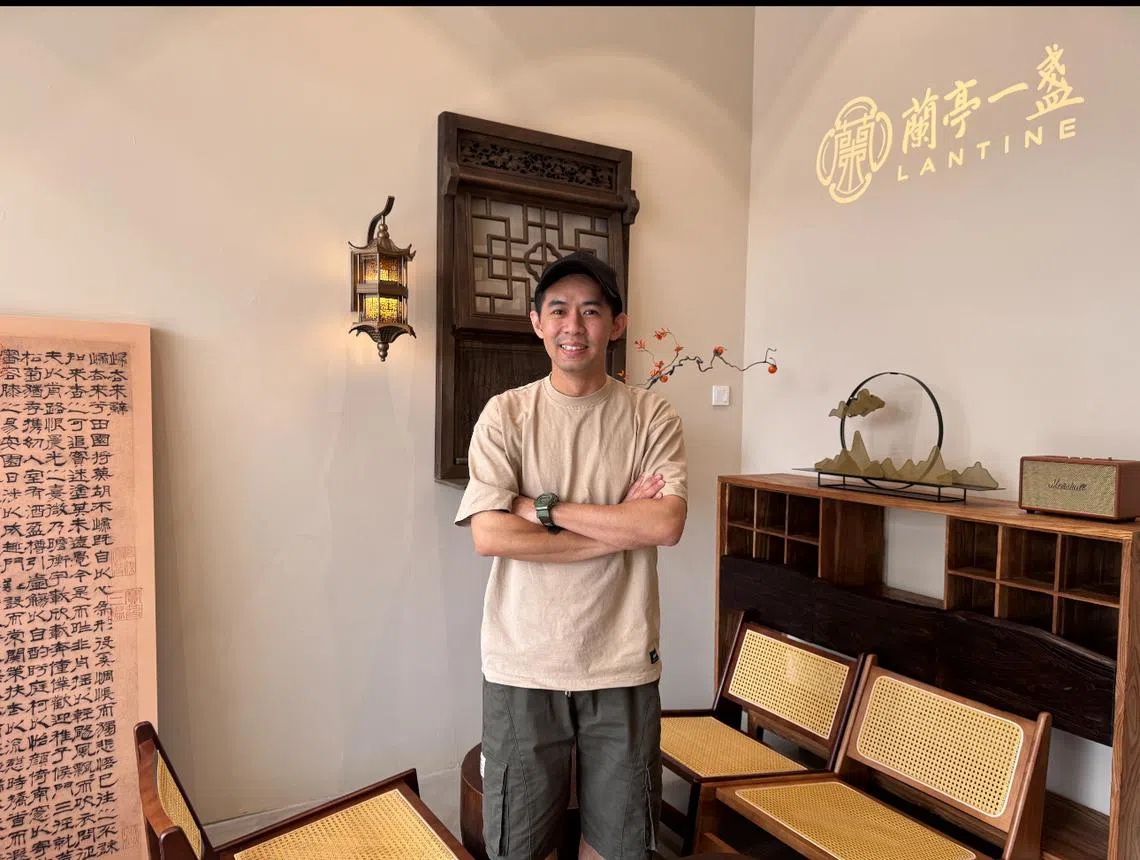
“I saw the potential to bring Chinese tea culture to more people in Singapore,” he says. “I wanted to create a space where customers can slow down, enjoy tea, and enjoy unhurried conversations.”
Craft and community
Beyond mass-market brands, new independent spaces are blending tea appreciation with craftsmanship and community. At the creative enclave of Pearl’s Hill Terrace in Chinatown, Inner Teahouse and Round and Round Gallery share a curated space where tea, art and conversation intersect. The two collaborate by pairing teas with handcrafted tableware and hosting joint events that bring together artists and guests.
Inner Teahouse founder Jane Cai, 30, originally from Xiamen, was deeply influenced by Fujian’s tea culture and sought to bring that experience to Singapore, creating a “quiet, tranquil environment” as an antidote to the city’s fast pace.
Says Cai: “We want to pay tribute to the history of Nanyang immigrants, especially those from southern China who came to Singapore in the 19th century and brought their tea traditions with them.”
Inner Teahouse sources its teas directly from farmers in Fujian’s renowned tea-producing regions. The space, which began as an online store before hosting guests at Pearl’s Hill in December 2024, offers tea experiences with snacks, and also workshops that delve into the history and cultural significance of Fujian teas.
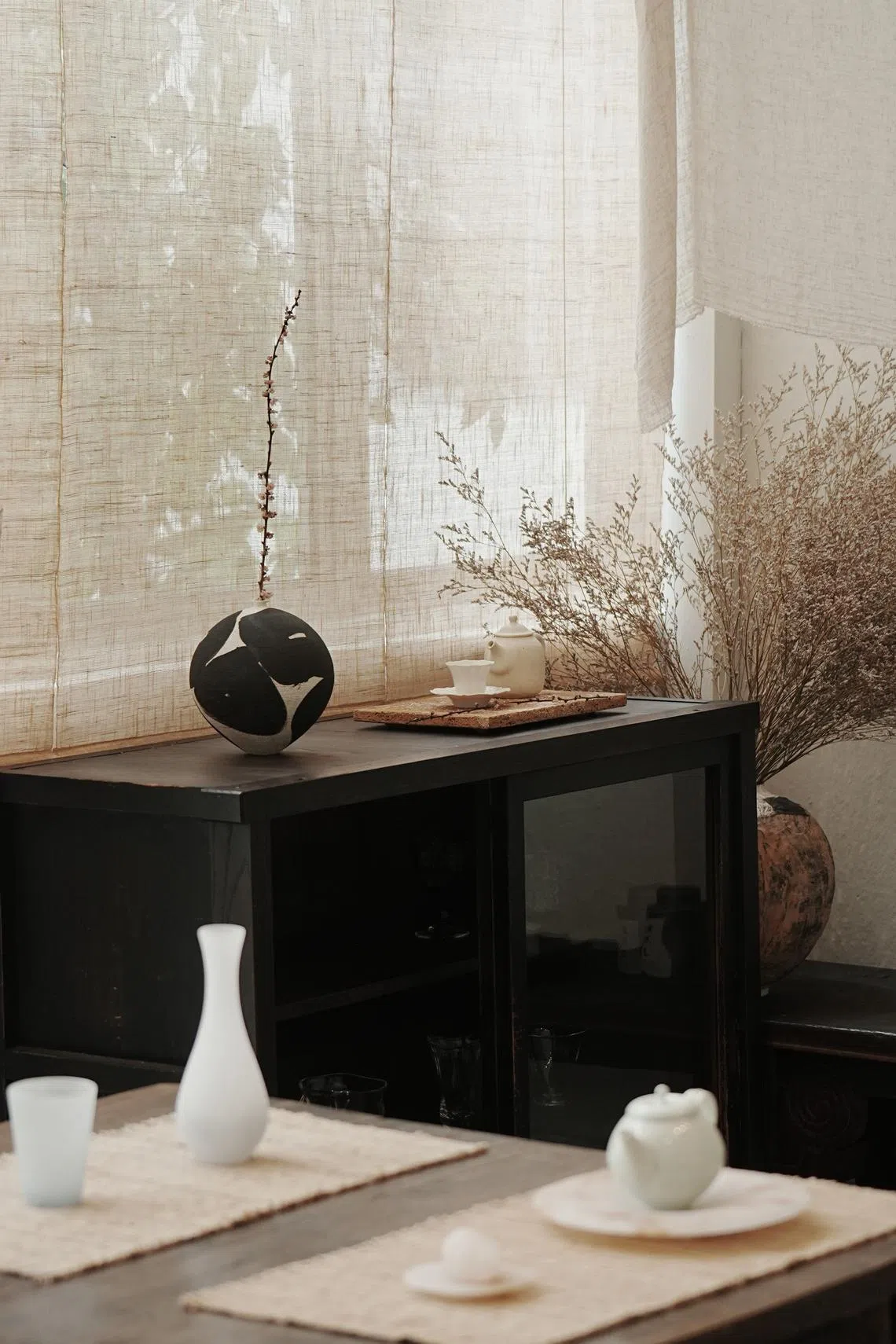
Like Inner Teahouse, Round and Round Gallery emphasises craftsmanship. Taking its cue from Chengdu, known for its relaxed lifestyle culture, the space hosts artist showcases featuring crafts, arts and homeware from China, Japan and beyond (S$68 to over S$200), where guests can also meet artists and learn about different lifestyles and delicate craftsmanship.
The social aspect is key, with guests – from locals and Chinese nationals to international visitors – forming new connections over crafts and tea. “Art and tea create a platform for connecting strangers,” says co-founder Deng Chao, 32. “Sitting down with a cup of tea and immersing yourself in delicate craftsmanship, which takes time to truly appreciate, encourages conversation and allows people to make new friends.”
Luxury offerings
Local tea brands are also going the premium route, such as Golden Seed, a tea atelier which opened in late January at Millenia Walk. Within its sleek, minimalist space, guests can pay anything from S$36 a head for a taste of rare Oriental teas, to S$550 for a VIP experience for six people.
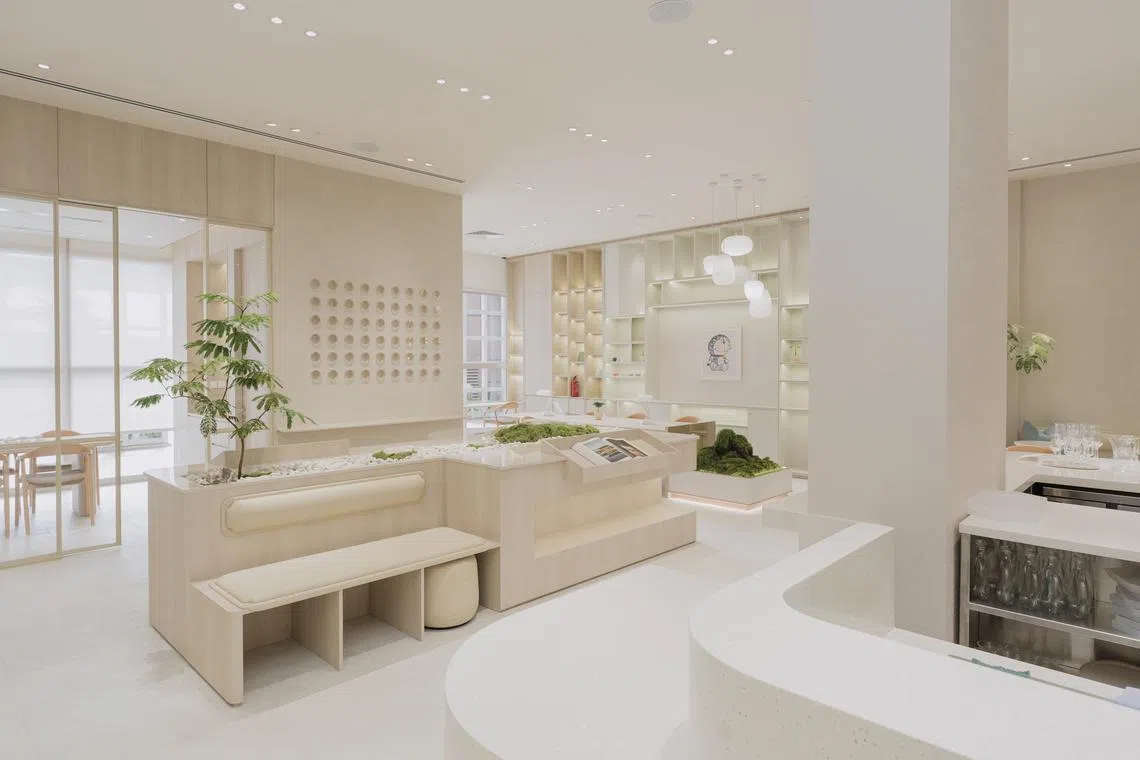
Similarly embracing the art of fine tea, Fort Sanctuary, incorporated in 2013, specialises in proprietary firing, resting and ageing techniques for Wuyi rock-essence tea, priced from S$39 to S$200 a box.
Lau Kiat Boon, the company’s Singaporean director, calls it “the pinnacle of Chinese tea culture”, explaining that Wuyi rock-essence tea holds a special place in Chinese culture, especially among government officials and the financial elite.
The renewed appreciation for Chinese tea has also driven demand for artisanal tableware, with brands like EASTNOMADS offering pieces for more curated tea spaces. “There’s this beautiful pride in rediscovering ‘Made in China,’ but with a contemporary, elevated twist,” said founder Lynn Zhu.
Challenges in the market
For newcomers like Teo Yu Ming, 28, founder of Ling Ling Tea at Marina One, breaking into Singapore’s tea scene is not without hurdles.
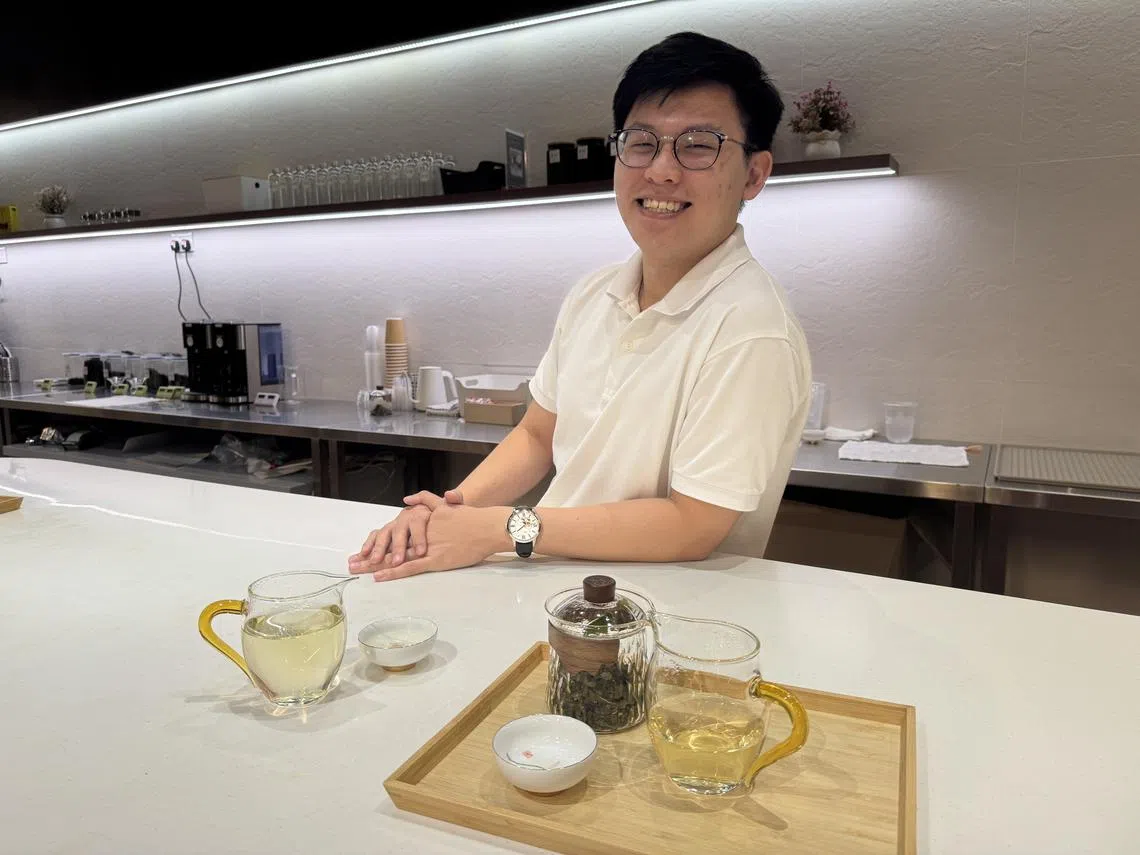
Raised in a tea-loving family in Taiwan, Teo hopes to showcase the diverse range of flavours in high-quality Chinese teas to the local market, such as Bi Luo Chun (floral green tea) and award-winning Oriental Beauty oolong at accessible prices (S$3.80 to S$14.30 a cup).
Yet, unlike Singapore’s well-established coffee culture, tea remains misunderstood, especially among younger consumers. Many still associate it with generic restaurant offerings, unaware of its depth and variety.
“Tea is shrouded in a lot of information asymmetry,” Teo explains, comparing it to wine, where pricing and quality can be unclear. Many customers lack proper brewing knowledge due to poor instructions and limited guidance.
“The tea-drinking culture in Singapore is still young,” he says. “There’s a lot more work to do.”
Lau of Fort Sanctuary notes that the tea industry has traditionally been shaped by nationalism, with consumers from tea-producing countries hesitant to explore foreign varieties. To challenge this, Fort Sanctuary introduced Chinese teas to Singapore’s Indian community at the Kalaa Utsavam festival, fostering cultural exchange through tea.
Dr Ramaswami feels that in food-crazy Singapore, consumers “are always looking for the next new thing – bubble tea, doughnuts, salted egg, mala, artisanal ice cream”. While artisanal tea shops could well be a passing fad, he thinks it is possible that the traditional ties of tea to Chinese culture could become a longer-lasting trend.
At Lantine, Ng is already thinking ahead. The cafe has drawn a diverse crowd – Singaporeans, Chinese national students from nearby, and even Indian families – many discovering it through word of mouth. Inspired by Haidilao’s customer engagement model, he plans to expand the roasted tea selection and offer discounts to customers who arrive in traditional hanfu attire.
“More people are becoming interested in Chinese culture,” he says. “Now, you can experience a piece of it here – without having to travel.”
Decoding Asia newsletter: your guide to navigating Asia in a new global order. Sign up here to get Decoding Asia newsletter. Delivered to your inbox. Free.
Copyright SPH Media. All rights reserved.

